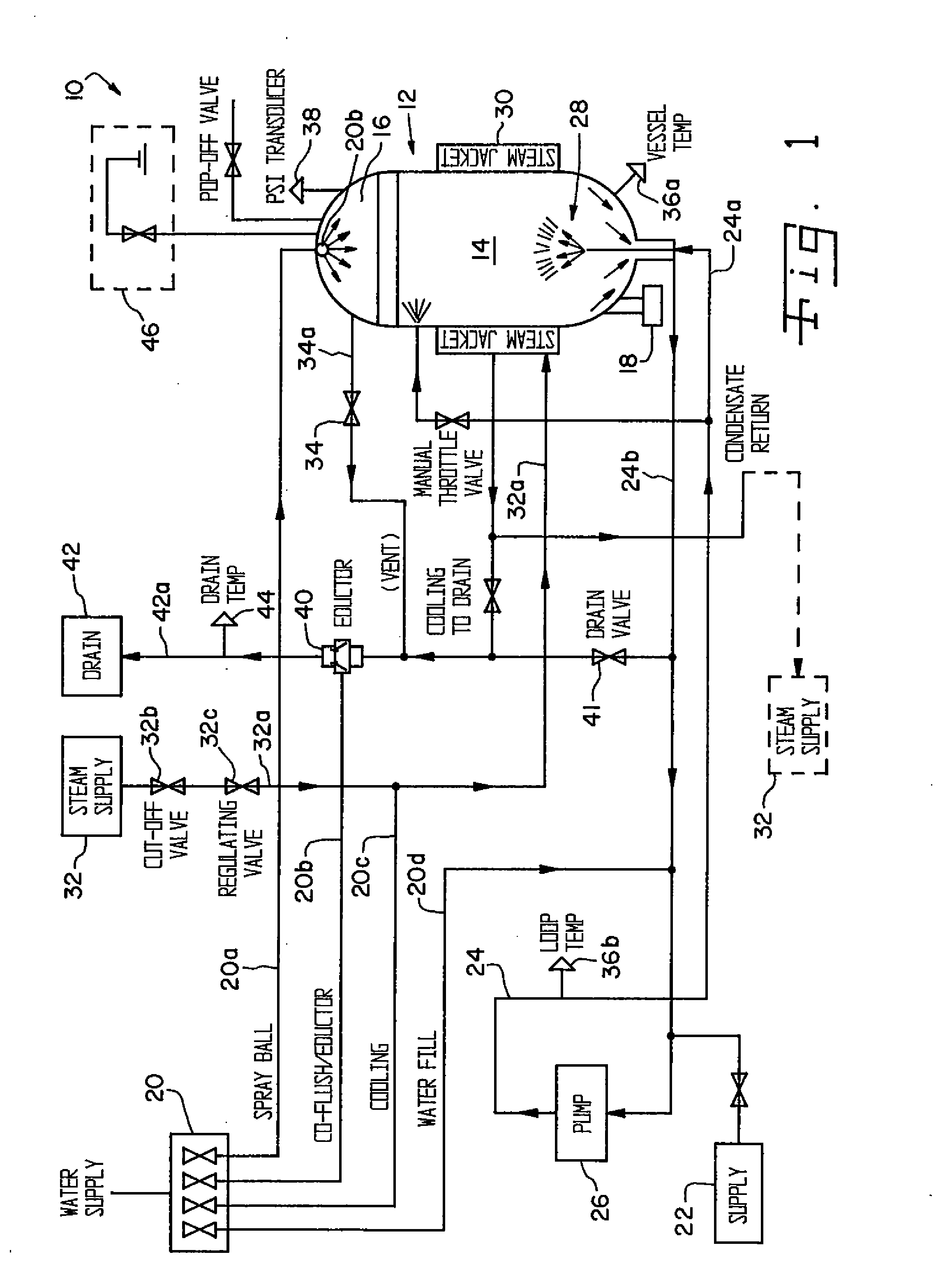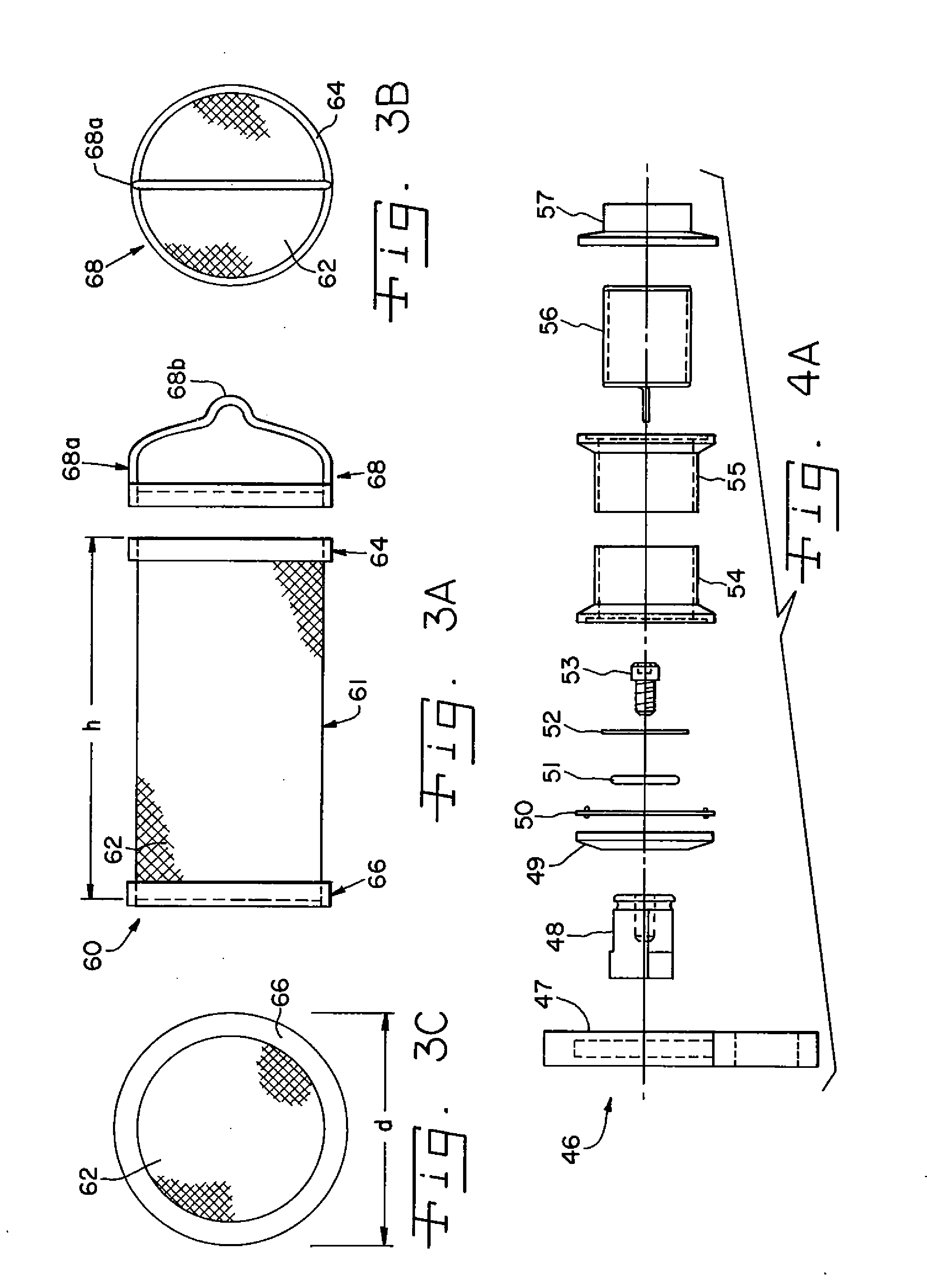System and method for treating infectious waste matter
a waste matter and system technology, applied in the field of waste disposal, can solve the problems of high cost of institutional disposal of infectious waste matter, large amount of infectious, biohazardous or radioactive waste, etc., and achieve the effect of safe treatment and disposal
- Summary
- Abstract
- Description
- Claims
- Application Information
AI Technical Summary
Benefits of technology
Problems solved by technology
Method used
Image
Examples
example one
[0078] Prior to filling the vessel with, for example, animal carcasses containing infectious or hazardous agents, the lid of the vessel is closed in order to “zero” the load scale. The lid is then opened and the vessel filled with waste matter to the desired volume. Preferably, the load should be at least 20% of the vessel's capacity (by weight) but not more than the weight capacity of the vessel, in which case the system will not operate and the excess weight must be removed. The vessel lid is then closed and secured. The PLC controller is then activated to initiate the digestion process by first determining the weight of the waste matter within the vessel. The digestion cycle is then initiated whereby waste is preferably added at the rate of 60% waste to 40% tissue by weight, alkali is added at the predetermined concentration based on the tissue weight. Such concentration is normally equivalent to a solution of 50% HaOH added by weight at a ratio of 15 to 20% of the total tissue w...
PUM
| Property | Measurement | Unit |
|---|---|---|
| internal pressure | aaaaa | aaaaa |
| pressure | aaaaa | aaaaa |
| temperature | aaaaa | aaaaa |
Abstract
Description
Claims
Application Information
 Login to View More
Login to View More - R&D
- Intellectual Property
- Life Sciences
- Materials
- Tech Scout
- Unparalleled Data Quality
- Higher Quality Content
- 60% Fewer Hallucinations
Browse by: Latest US Patents, China's latest patents, Technical Efficacy Thesaurus, Application Domain, Technology Topic, Popular Technical Reports.
© 2025 PatSnap. All rights reserved.Legal|Privacy policy|Modern Slavery Act Transparency Statement|Sitemap|About US| Contact US: help@patsnap.com



